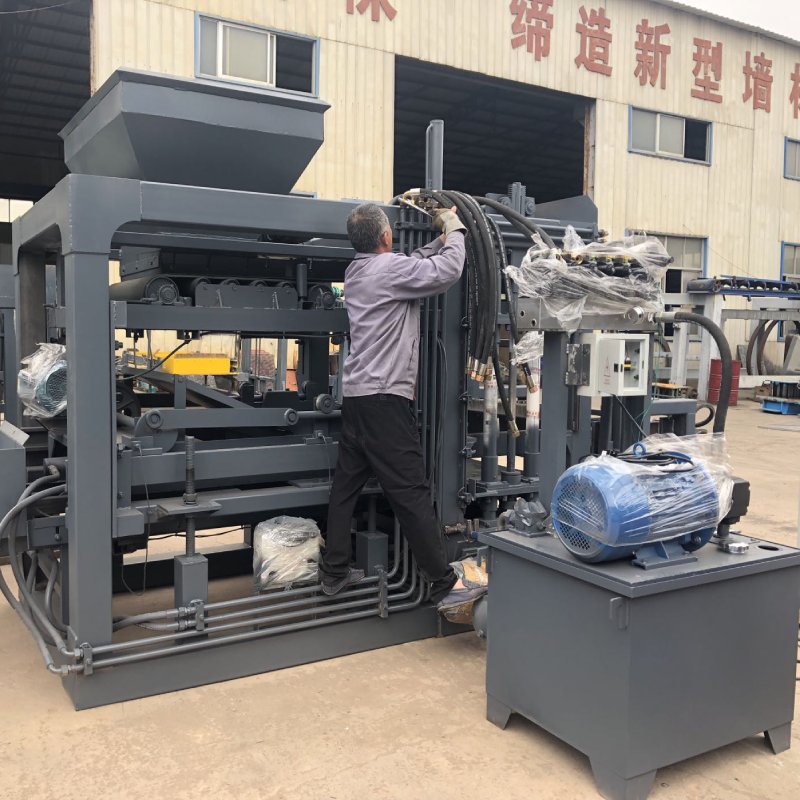
Image source Aiwei Block machine
Portable Block Brick Making Machines Empower Small-Scale Construction Projects
Introduction
In the realm of construction, small-scale projects often carry significant social, economic, and infrastructural implications. From community housing initiatives to rural development endeavors, these projects play a pivotal role in transforming localities and improving lives. However, challenges such as limited resources, budget constraints, and inadequate access to construction equipment can hinder their progress. In this context, portable block brick making machines have emerged as a transformative solution, empowering small-scale construction projects by enabling on-site block production. This article explores the importance of portable block brick making machines, their benefits, operational mechanisms, and the profound impact they are having on the landscape of small-scale construction projects.
The Significance of Small-Scale Construction Projects
Small-scale construction projects, often overlooked amidst grander ventures, hold the key to community development, resilience, and localized progress. These projects encompass vital elements such as affordable housing, educational facilities, healthcare centers, and infrastructure improvements that directly impact the lives of people.
Challenges in Small-Scale Construction
Despite their significance, small-scale projects encounter various challenges that hinder their success:
- Limited Resources: Restricted budgets and resources can pose significant hurdles to executing these projects efficiently.
- Logistical Constraints: Transporting building materials from distant manufacturing sites can result in delays, increased costs, and potential supply chain issues.
- Labor Shortages: The availability of skilled labor can be scarce in certain regions, leading to inefficiencies and delays.
Empowering Small-Scale Construction with Portability
Portable block brick making machines have emerged as a game-changing solution for small-scale construction projects. These machines, which can be easily transported to project sites, offer on-site block production capabilities, addressing many of the challenges faced by these projects.
Benefits of Portable Block Brick Making Machines
- On-Site Production: The most significant advantage of portable machines is their ability to produce bricks directly at the construction site. This eliminates the need to transport bricks from remote manufacturing facilities, reducing logistical complexities and costs.
- Immediate Availability: Portable machines provide immediate access to building materials, allowing construction to commence without delays caused by transportation or supply chain issues.
- Customization: On-site production enables customization based on project requirements. Bricks can be tailored in terms of size, shape, color, and texture, accommodating specific architectural and design needs.
- Cost Efficiency: Portable machines contribute to cost savings by eliminating transportation expenses and reducing reliance on external suppliers.
- Reduced Labor Dependency: These machines require minimal manual labor, making them suitable for projects with limited access to skilled workers.
- Community Engagement: On-site production engages local communities, promoting participation and skill development among residents.
Operational Mechanisms of Portable Block Brick Making Machines
- Compact Design: Portable machines are designed to be lightweight, compact, and easy to transport. This mobility facilitates their deployment to remote or challenging terrains.
- Setup and Operation: Setup and operation of portable machines are streamlined, typically requiring minimal technical expertise. Basic training is often sufficient for operators to start production.
- Raw Material Processing: These machines handle various raw materials, such as soil, sand, cement, and aggregates, to create the brick mixture.
- Molding and Compaction: Portable machines encompass the entire brick-making process, from material mixing and molding to compaction and initial curing.
- Curing and Finishing: Some machines offer curing options, including air curing or accelerated curing methods, depending on project requirements.
Impact on Small-Scale Construction Projects
- Empowerment: Portable machines empower local communities and organizations to take control of their construction needs, fostering self-reliance and community-driven development.
- Rapid Response to Emergencies: In disaster-affected areas, portable machines facilitate quick on-site brick production, enabling rapid reconstruction and relief efforts.
- Affordable Housing: For affordable housing projects, portable machines offer a cost-effective solution, contributing to the reduction of housing disparities.
- Infrastructure Development: Portable machines are ideal for remote areas with limited access to manufacturing facilities, allowing for localized infrastructure improvements.
Challenges and Considerations
- Production Capacity: Portable machines are designed for smaller-scale projects and might not be suitable for large-scale endeavors.
- Material Sourcing: Ensuring a consistent supply of quality raw materials is essential for uninterrupted machine operation.
- Training and Maintenance: Proper training for machine operation and maintenance is required to ensure optimal performance.
Conclusion
Portable block brick making machines represent a beacon of hope for small-scale construction projects worldwide. Their ability to facilitate on-site brick production brings efficiency, affordability, and customization to initiatives that are transforming communities, improving living standards, and driving local development. By bridging resource gaps, reducing logistical complexities, and empowering local communities, these machines embody the spirit of innovation and resilience needed to overcome challenges inherent in small-scale construction. As the world advances toward sustainable development, portable block brick making machines serve as a tangible embodiment of progress, enabling individuals and communities to shape their built environment and lay the foundation for a brighter future.
